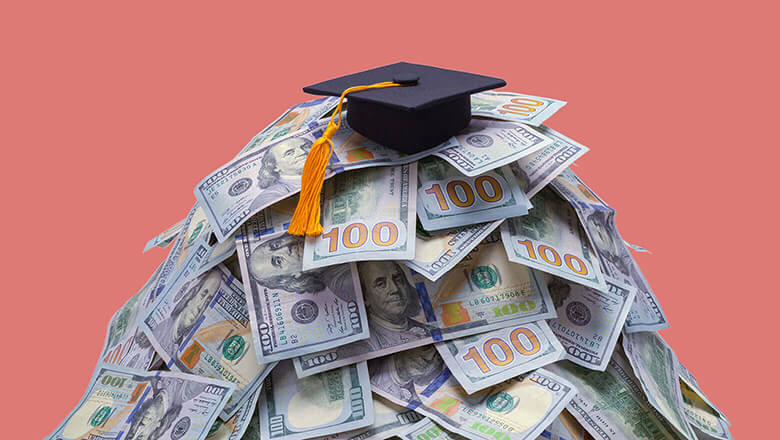Announcement and Public Comments
Ahead of the 2020 election, President Joe Biden made student loan forgiveness a focus of his campaign. On Wednesday, his administration moved forward with plans aimed at overhauling what U.S. Secretary of Education Miguel Cardona called “a broken system.”
For context, the $1.7 trillion owed on student loans is larger than both US credit card debt and auto debt. Prior to the pandemic, 10 million borrowers had fallen behind on student loan payments. In March of 2020, student loans serviced by the federal government were put on hold.
Now, any proposed changes could impact upwards of 40 million Americans. Before the Education Department begins codifying new regulations, the administration has granted a 30-day public comment period. Final rules will be enacted no later than July 1, 2023.
Proposed Changes
The proposed student loan overhaul plan contains three major elements, one of which includes protections for defrauded borrowers. If students were lied to or taken advantage of by for-profit schools, they could qualify for debt cancellation. Depending on the circumstances, group claims may be allowed, different types of misconduct may qualify, and the claims process would be simplified.
Biden’s plan also calls for an overhaul of the Public Service Loan Forgiveness Program. This would allow government employees and some nonprofit workers to qualify for debt cancellation sooner. Finally, the White House wants to change how interest is calculated when borrowers are struggling to repay their loan.
What Could Happen Next
President Biden has floated the idea of forgiving $10,000 from individual borrower’s student loan accounts, which would cost upwards of $321 billion. Close to a third of all student loan borrowers could see their debt completely forgiven under that policy.
Other Democrats have called for cancellation of at least $50,000 for all borrowers, taking into consideration that over three million student loan borrowers owe more than $100,000. Student loans are a political hot potato given many Americans never borrowed money for college, and those who support forgiveness don’t necessarily agree on the appropriate amount. The issue is likely to remain in focus as student loan payments are set to resume on August 31.
Things are changing daily within the financial world. Sign up for the SoFi Daily Newsletter to get the latest news updates in your inbox every weekday.
Please understand that this information provided is general in nature and shouldn’t be construed as a recommendation or solicitation of any products offered by SoFi’s affiliates and subsidiaries. In addition, this information is by no means meant to provide investment or financial advice, nor is it intended to serve as the basis for any investment decision or recommendation to buy or sell any asset. Keep in mind that investing involves risk, and past performance of an asset never guarantees future results or returns. It’s important for investors to consider their specific financial needs, goals, and risk profile before making an investment decision.
The information and analysis provided through hyperlinks to third party websites, while believed to be accurate, cannot be guaranteed by SoFi. These links are provided for informational purposes and should not be viewed as an endorsement. No brands or products mentioned are affiliated with SoFi, nor do they endorse or sponsor this content.
Communication of SoFi Wealth LLC an SEC Registered Investment Advisor
SoFi isn’t recommending and is not affiliated with the brands or companies displayed. Brands displayed neither endorse or sponsor this article. Third party trademarks and service marks referenced are property of their respective owners.
SOSS22070701
The post How the White House Wants to Change Student Loans appeared first on SoFi.




Leave A Comment